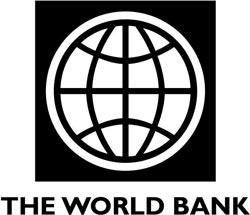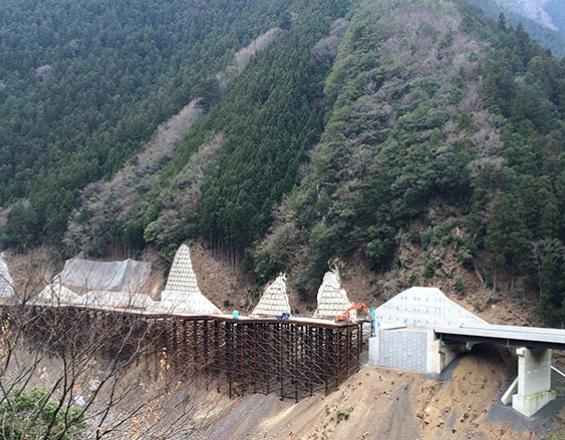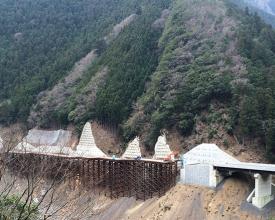
Infraestructuras resistentes: Carreteras, corrimientos de tierras y gestión del riesgo de catástrofes

Los riesgos geológicos están aumentando en todo el mundo debido al incremento de las zonas con infraestructuras potencialmente peligrosas, a los efectos del cambio climático, y suponen una amenaza cada vez mayor para las infraestructuras viarias que son fundamentales para el comercio, la industria, la salud pública, la calidad de vida, la seguridad y la productividad económica. Japón está especialmente expuesto a riesgos geológicos como terremotos, inundaciones, corrimientos de tierras y tsunamis debido a sus condiciones geográficas, meteorológicas y topográficas únicas. Dirigido por el Ministerio de Territorio, Infraestructuras y Transporte (MLIT), Japón ha desarrollado su capacidad para gestionar los riesgos de geoamenazas en las carreteras a través de una amplia experiencia en catástrofes, como el Gran Terremoto del Este de Japón de 2011. El Gobierno de Japón ha construido infraestructuras viarias resilientes mediante una coordinación institucional eficaz, abordando los principales retos de forma integrada y aplicando medidas estructurales y no estructurales a sus sistemas viarios.
Contexto
Défis à relever
- Las carreteras de Japón deben protegerse de numerosos riesgos geológicos, como desprendimientos de rocas, derrumbes de rocas y suelos, corrimientos de tierras, flujos y erosión, debido al contexto topográfico y geográfico del país.
- La ubicación de Japón en el cinturón sísmico del Pacífico lo expone a frecuentes terremotos y tsunamis, que pueden perturbar las redes de carreteras y provocar pérdidas significativas. Por ejemplo, el Gran Terremoto del Este de Japón de 2011 obligó a cerrar 15 autopistas, 69 carreteras nacionales y 638 carreteras prefecturales y municipales, lo que dificultó las labores de rescate e impidió la entrega de suministros de socorro.
Ubicación
Procesar
Resumen del proceso
Los cinco componentes básicos son aspectos clave de una gestión eficaz del riesgo de geoamenazas en carreteras y pueden integrarse en las estrategias y planes de desarrollo de los gobiernos. Estos principios pueden aplicarse a cada una de las etapas del desarrollo de una carretera: disposiciones institucionales, planificación, diseño, construcción, operaciones, mantenimiento y post-desastre. Aunque los costes de las medidas estructurales pueden ser elevados, las medidas no estructurales rentables, como la difusión de información de emergencia y la planificación y coordinación de múltiples partes interesadas (por ejemplo, el gobierno local/nacional y el sector privado), pueden contribuir significativamente a una gestión eficaz del riesgo de geoamenazas. La aplicación satisfactoria de estos elementos básicos puede ayudar a reducir el impacto de los riesgos geológicos sobre la vida humana, los bienes y el entorno natural y construido.
Bloques de construcción
Establecer un marco institucional adecuado
Las instituciones pertinentes de Japón colaboran para crear y promulgar leyes y reglamentos adecuados, así como planes y estrategias de los gobiernos nacionales y locales (por ejemplo, Japan Rail, el gobierno local y el Ministerio de Territorio, Infraestructuras, Transporte y Turismo colaboran en la gestión del riesgo de peligros geológicos en las carreteras). El marco japonés también incluye la coordinación institucional y técnica, así como mecanismos de financiación adecuados. Por ejemplo, el coste de añadir altura a una autopista puede ser compartido tanto por las organizaciones de obras públicas como por las de gestión del riesgo de catástrofes. Estos tipos de mecanismos de reparto de costes garantizan que las cargas financieras se compartan equitativamente.
Factores facilitadores
- Voluntad política para establecer un marco institucional, leyes y reglamentos adecuados.
- Recursos financieros para aplicar mecanismos de financiación.
Lección aprendida
- Las organizaciones de gestión del riesgo de catástrofes y las organizaciones de obras públicas pueden compartir los costes de determinadas inversiones en infraestructuras.
- Los gobiernos nacionales y locales y otras partes interesadas clave deben coordinar las estrategias relacionadas con la gestión del riesgo de desastres, incluido el uso de infraestructuras e instalaciones públicas como carreteras, autopistas y ferrocarriles. Estas instalaciones pueden utilizarse para mejorar los procedimientos y operaciones de gestión de desastres en caso de geoamenazas como inundaciones, tsunamis y corrimientos de tierras.
Evaluación de riesgos de peligros geológicos y planificación de carreteras nuevas y existentes.
Las carreteras, autopistas y otras instalaciones públicas ayudaron a reducir los daños y la pérdida de vidas humanas en el Gran Terremoto del Este de Japón de 2011 al proporcionar protección contra las inundaciones, debido en gran parte a las acertadas evaluaciones de riesgos realizadas antes de la construcción. Por ejemplo, la autopista de Sendai Oriental (elevación de 7 a 10 metros) actuó como barrera secundaria contra el tsunami entrante, impidiendo que las olas penetraran más tierra adentro. Más de 200 personas escaparon corriendo hasta la autopista, y su terraplén sirvió de refugio de evacuación para los residentes locales.
Factores facilitadores
- Disponer de recursos suficientes para realizar evaluaciones de riesgos.
- Disponibilidad de datos pertinentes para realizar evaluaciones precisas y fundamentar la planificación de las carreteras nuevas y existentes.
Lección aprendida
- La identificación de riesgos previa al concepto es crucial. En el caso de las nuevas carreteras, las evaluaciones del riesgo de peligros geológicos permiten a las autoridades gestoras tomar decisiones informadas sobre cómo evitar los lugares peligrosos.
- La cartografía de los peligros, la evaluación de los niveles de exposición y la determinación de los impactos potenciales sobre el entorno social son esenciales para una gestión holística del riesgo de geoamenazas en las carreteras.
- La determinación de las posibles repercusiones económicas derivadas de la pérdida de acceso a las carreteras y la realización de un análisis coste-beneficio de las posibles inversiones para mitigar los riesgos geológicos son fundamentales. Los resultados de estas evaluaciones ayudan a identificar y priorizar los lugares en peligro y a fundamentar las medidas de reducción del riesgo.
Aplicación de medidas estructurales para reducir el riesgo de daños en las carreteras
Tras el Gran Terremoto del Este de Japón de 2011, las principales autopistas y carreteras de acceso a las zonas afectadas volvieron a funcionar en cuestión de semanas, lo que agilizó enormemente las operaciones de socorro y recuperación. Esto se debió en gran medida a las sólidas medidas estructurales, junto con una eficiente labor de recuperación por parte de los servicios públicos. En cambio, tras el Gran Terremoto de Hanshin-Awaji de 1995 se tardó más de un año y medio en reconstruir las autopistas.
Factores facilitadores
- Recursos financieros y voluntad de invertir en recursos estructurales.
- Capacidad tecnológica y de ingeniería para aplicar medidas estructurales a gran escala.
Lección aprendida
- Las medidas estructurales reducen el riesgo de que las carreteras sufran daños debidos a geoamenazas, disminuyen los costes de mantenimiento de las carreteras, garantizan la conectividad durante y después de las catástrofes y contribuyen a la rápida recuperación de una carretera tras un episodio de geoamenazas.
- La bioingeniería y otros tipos de medidas estructurales pueden aplicarse durante las fases de construcción, explotación y mantenimiento de la carretera.
- Una evaluación exhaustiva de las condiciones geográficas, geológicas, geotécnicas, hidrológicas e hidráulicas es esencial para el diseño eficaz de las medidas estructurales.
Adoptar medidas adicionales de reducción de riesgos no estructurales
Las medidas no estructurales para los riesgos geológicos en las carreteras son aquellas que no implican una construcción física y suelen ser menos costosas que las medidas estructurales. Por ejemplo, las autopistas japonesas suelen tener estaciones al borde de la carretera(michi-no-eki), que se han planificado estratégicamente para que sirvan como centros de evacuación y centros de información relacionada con los desastres (por ejemplo, estado de las carreteras e información de emergencia). Tras el Gran Terremoto del Este de Japón de 2011, las estaciones al borde de la carretera y las zonas de aparcamiento de las autopistas fueron utilizadas por numerosos equipos y organizaciones como bases operativas para las labores de rescate y socorro. Muchos de ellos estaban equipados con electricidad, alimentos y agua, y servían como refugios de emergencia, donde se compartía información importante con los ciudadanos.
Factores facilitadores
- Recursos financieros para desarrollar y aplicar medidas no estructurales de reducción de riesgos.
- Conocimientos técnicos y capacidad para desarrollar y aplicar medidas no estructurales de reducción de riesgos.
Lección aprendida
- Los métodos no estructurales de reducción del riesgo, como la detección precoz y la capacidad de recopilación de información de emergencia, el desarrollo y la aplicación de planes de preparación y respuesta ante emergencias, y la implicación de las partes interesadas para reducir los riesgos de peligros geológicos y concienciar a la población, son fundamentales para la gestión del riesgo de desastres en las carreteras.
- Las medidas no estructurales de reducción del riesgo pueden ser una forma rentable de reducir las pérdidas humanas y económicas derivadas de los fenómenos geoamenazantes.
Realización de actividades posteriores a la catástrofe
Las autoridades activaron acuerdos preestablecidos para movilizar a contratistas inmediatamente después del Gran Terremoto del Este de Japón de 2011, como parte de lo que se conoció como "Operación Peine de Dientes". El Ministerio de Territorio, Infraestructuras, Transporte y Turismo (MLIT) puso en marcha una estrategia para garantizar que la autopista de Tohoku (una vía arterial que va desde Tokio hasta el extremo norte de la isla japonesa de Honshu) quedara transitable lo antes posible, a fin de permitir la entrega de suministros de socorro y agilizar la respuesta. Gracias a esta respuesta rápida y coordinada, el 97% de las carreteras nacionales costeras eran accesibles el 18 de marzo, tan sólo una semana después del terremoto. Además, toda la autopista de Tohoku se abrió al tráfico general 13 días después del seísmo.
Factores facilitadores
- Coordinación entre los sectores gubernamentales, así como con las partes interesadas de las esferas privada y pública.
- Sistemas sólidos que garanticen la ejecución puntual y precisa de las inspecciones de emergencia y las evaluaciones posteriores a la catástrofe.
Lección aprendida
- Las inspecciones y evaluaciones de emergencia deben llevarse a cabo junto con las medidas no estructurales tras una catástrofe.
- Es fundamental una planificación exhaustiva, que incluya los procedimientos necesarios para una recuperación, rehabilitación y reconstrucción resistentes.
- Si los coches o los conductores están expuestos a algún riesgo sustancial, deben activarse inmediatamente las normas de tráfico de emergencia y los sistemas de notificación pública.
Impactos
Económico
- Una buena planificación y alineación de las nuevas carreteras puede suponer un ahorro significativo en los costes de construcción y en los posteriores costes de mantenimiento, como la reparación de los lugares dañados por fenómenos de geoamenazas.
- Una gestión eficaz del riesgo de geoamenazas en las carreteras garantiza que las pérdidas económicas sean limitadas al minimizar las interrupciones en las carreteras. Las carreteras inutilizadas por fenómenos peligrosos pueden ocasionar muchas formas de pérdidas económicas, como el aumento de los costes de transacción, la pérdida de productividad y la destrucción de recursos.
Medio ambiente
- La construcción, la gestión y el mantenimiento de las estructuras viarias para que resistan los impactos y las tensiones pueden limitar los impactos medioambientales adversos, como los costes medioambientales de adquirir y asignar recursos para reconstruir carreteras.
- Garantizar que las carreteras sean seguras y transitables también puede suponer un ahorro potencial de recursos energéticos que se necesitarían si la carretera se interrumpiera.
Social
- Las carreteras fiables son un factor clave para una respuesta rápida y eficaz en contextos posteriores a catástrofes. Las operaciones de búsqueda y rescate, el transporte de heridos a los hospitales, el acceso a los refugios de emergencia y la provisión de suministros de socorro dependen en gran medida de que las carreteras estén operativas durante y después de las emergencias.
- Las carreteras, autopistas y otras instalaciones públicas ayudaron a reducir los daños y las pérdidas al proporcionar protección contra las inundaciones y servir como rutas de evacuación y estaciones base para las operaciones de emergencia.
Beneficiarios
- Autoridades gubernamentales.
- Comunidades locales.
- Entidades del sector privado.

